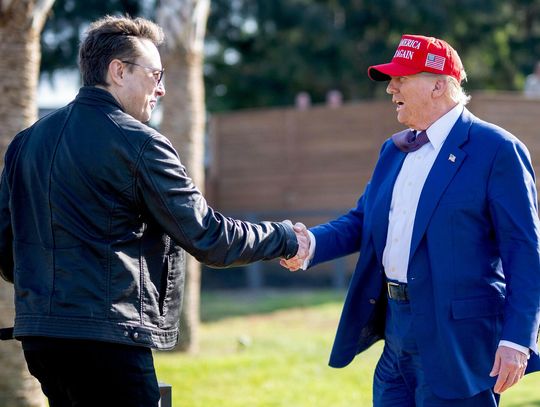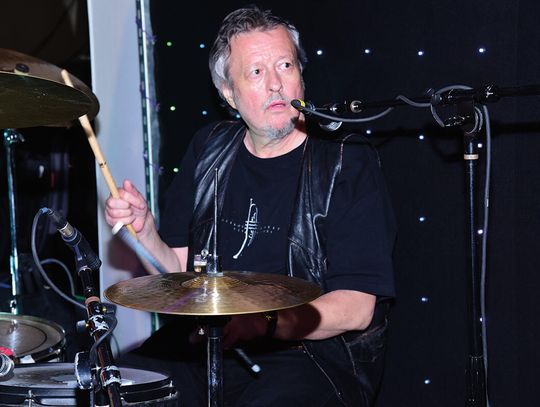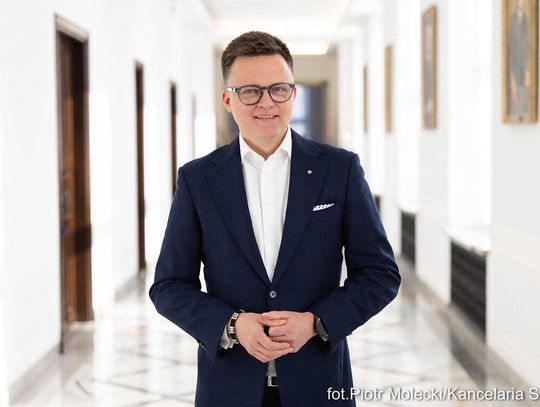Poland’s Energy Revolution Will Break the Kremlin's Gas Monopoly in Three Years’ Time
It was until recently that Gazprom, known as Poland’s sole supplier of blue fuel, had dispatched to the country more than 60 percent of the consumed gas. This enabled the Russian gas company to dictate inflated prices while taking advantage of its monopoly for political purposes. But in three years, Poland's gas imports from Russia could be reduced even to zero, mainly thanks to U.S.-sourced liquefied natural gas (LNG) and gas flows from Norway.
Recently we can observe increased activity of Russian propaganda on the diversification of Polish gas supplies, the primary tool of which is the Russian government's Sputnik news agency, or the only pro-Russian online media outlet in Poland.
Sputnik’s Polish-language version garnered nearly 3 million views in June itself. Its energy reports tend to bitterly criticize, among others, U.S. LNG shipments to Poland or the country's plans to build the Baltic Pipe gas pipeline intended to pump raw material from the Norwegian gas fields to Poland.
And it is nothing short of amazing as Sputnik, which serves as the Kremlin's media arm, was created to advance Russia's economic and political interests abroad. And both of these energy projects strike a blow against Moscow, introducing keen competition and making Russia inept at using gas flows as a political instrument.
Pipeline geopolitics
Gas pipelines running from the Soviet Union to its satellite states were designed in such a way to guarantee the latter's energy dependence on Moscow. And this continued after the fall of the Eastern bloc, with the newly elected authorities of Central and Eastern European countries having no other choice but to seal further deals that made them heavily reliant on Russian energy.
In Poland, for instance, Russian imports covered up to 60 percent of the country's total natural gas consumption. In 2016, some 90 percent of Poland's gas imports came from the East, but Warsaw was obliged to pay more for its blue fuel flows than Germany, located farther away from Russia. This was because Poland had no alternative to Russian-sourced energy, which forced it to buy gas at the prices that Moscow had demanded.
Another post-Soviet absurd was associated with transit tariffs. The Polish stretch of the Yamal pipeline, a gas infrastructure pumping flows from east to west, is operated by EuRoPol Gaz, a joint venture between Polish state-run energy company PGNiG and Russian Gazprom. Also, according to the transit deal, Poland could practically reap no profits from gas shipments from Russia. Under the agreement between Poland and Russia, EuRoPol Gaz makes less than 21 million zlotys, which is a violation of free-market principles. All profits surpassing the level are placed in a special fund and can be paid only upon the consent of both shareholders in EuRoPol Gaz. For comparison's sake, Ukraine's annual revenues from transit fees amount to $2 billion.
And as for Ukraine, it is worth mentioning that Russia uses there its monopoly position to exert political influence. Until recently, Ukraine remained fully reliant on Russian gas flows – a state of affairs that had long been allowed by the two parties. Kiev maintained its neutral or even pro-Russian course, getting natural gas prices below market rates in exchange, both with the consent of Russia and under bilateral energy deals.
This became a thorny issue for Russia after Ukraine's pro-Western political class took power following the Orange Revolution, a situation that prompted Moscow to undermine all deals, reaching its culmination in the winter of 2006 when Russia turned off the valve of energy exports to Ukraine.
By taking advantage of Russia-Ukraine gas dispute, the Kremlin made Kiev both accept the increase in gas tariffs and give the green light to establishing RosUkrEnergo (RUE), a new company that became the intermediary between Russian Gazprom and Ukrainian Naftogaz and aimed to lobby Russian interests in Ukraine. Suffice it to say that Russian Gazprom holds half of the firm's shares while a 45-percent stake remains under control of a pro-Russian billionaire oligarch Dmytro Firtash, currently in Austrian exile. Interestingly, one of the RosUkrEnergo's executive directors was a fellow student of Dmitry Medvedev at the KGB academy.
A similar situation occurred during the 2009 gas crisis when Russia made Ukraine sign an unfavorable agreement on supplying and shipping gas, as confirmed by the decision of the Stockholm arbitration court. Also, Moscow and Kiev inked a "fleet-for-gas" deal that permitted Russia to build up its military presence in the Crimea.
As revealed a few years later, servicemen that had arrived in the peninsula became in 2014 the infamous "little green men", Russian military forces that annexed the territory from Ukraine.
Poland also fell victim of Russian gas blackmail, most recently before Donald Trump's trip to the country in 2017 when the quality of gas flows to Poland diminished dramatically, forcing Warsaw to put all deliveries to a halt. And this is what took place before the NATO summit in Warsaw.
Gas marketization
Being aware of the motives behind the Kremlin's actions, the Polish authorities decided to diversify gas supplies to Poland. What is particularly pleasing is that Polish political parties reached a consensus, preventing the gas diversification process from facing significant obstacles.
Its first and chief part consisted of building the LNG terminal in Świnoujście. Gazprom's energy monopoly in the region began to break down on December 11, 2015, when the first-ever gas carrier from Qatar docked in the port of Świnoujście. LNG imports to Poland are growing year by year. In 2016 the Polish LNG terminal received no more than 1 billion cubic meters of gas out of the demanded 17 billion cubic meters while two years later brought an increase to 2.7 billion cubic meters.
Poland is currently involved in increasing its regasification capacity from 5 to 7.5 billion cubic meters per year. Also, preliminary work is now underway to launch the Baltic Pipe, a project running from Norway to Poland with the transmission capacity predicted to be 10 billion cubic meters annually. Also, Poland has decided to install an LNG floating storage and regasification unit (FSRU) in the Bay of Gdansk.
Both of these investments seek to give Poland the possibility to import such gas volumes to fully satisfy the country's demand without the need to buy Russian-sourced energy.
Does this mean that Poland will halt gas flows from Russia? Not really. Having a choice when it comes to purchasing its gas supplies, Warsaw will be able to launch politics-free business talks and obtain a profitable offer to replace Russian gas flows while building a diversified energy supply portfolio.
Gas revolution
To realize the scale of the raw material revolution now taking place in Poland, it is worth quoting several figures.
Poland's LNG terminal in Świnoujście received its first Qatari LNG cargo in December 2015. Back then, Warsaw still imported from Russia up to 90 percent of all its gas stocks at inflated prices. In 2018, 20 percent of all gas sent to Poland, or 2.71 billion cubic meters, were delivered in the form of liquefied natural gas, mostly from the United States.
Poland's Yamal contract with Russia's leading gas company Gazprom expires in 2022, a date that coincides with that of making the Baltic Pipe gas pipeline fully operational. Also, Polish PGNiG inked a deal with U.S. energy firm Venture Global Calcasieu Pass, according to which the latter committed itself to provide a total of 1.35 billion cubic meters of LNG per year.
In 2024, a total amount of contracted gas flows will not surpass 12.5 billion cubic meters, as compared to now-delivered 3.5 billion cubic meters, of which up to 5 billion will be dispatched on a delivered ex-ship basis, that is at the expense of a U.S. supplier. Poland contracted the remaining 7.5 billion cubic meters of LNG under a free-on-board basis, making Poland's gas firm PGNiG deliver raw material if there is a demand for it in the country or sell it to any other place in the world, with the shipping responsibility being shifted onto the Polish customer already in a U.S. LNG port.
Starting from 2022, Poland will be able to launch a free gas market in a step that stems from the country's current diversification activities. Also, Poland is on track to enter the world gas trade league and be able to send gas flows via pipelines both to neighboring Ukraine and recipients all over the world.
Not surprisingly, Russian propaganda outlets are making their best efforts to impede these plans, portraying them as unrealistic and unprofitable. The Kremlin does not want another European country should get out of its gas grip and break Gazprom's energy monopoly, making the Russian state-run giant compete on the free market.
Author:
Maciej Zaniewicz – an editor of Energetyka24.com, Poland's largest website that focuses on the energy sector.
fot.SERGEI KOZLOV/EPA










